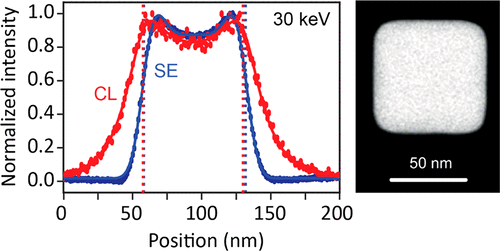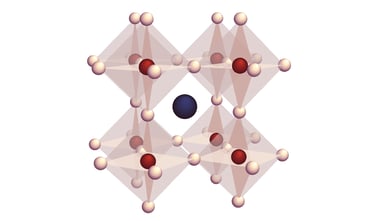This is done by examining nanoscale excitation of Ag nanocubes with coherent cathodoluminescence imaging.
Cathodoluminescence spectroscopy is commonly used for nanoscale optical material characterization. In the recent years coherent CL has gained interest as a method for characterizing optical nanomaterials with unique characteristics such as nanoscale probe size, broadband excitation spectrum, and attosecond excitation pulse.
In the experiment, the resonant plasmonic near-field distribution of 70 nm Ag nanocubes with sharp edges was investigated. The localized plasmons were coherently excited and the CL radiation was collected with the SPARC cathodoluminescence system. The experimental data and the calculations show that Ag nanocube edges can be derived from the CL maps with an accuracy better than 3 nm. The data demonstrate that CL probes the electron-induced plasmon fields with nanometer accuracy.
The authors conclude that the electron-induced field profiles can be accurately derived and firmly establishes CL as an optical characterization technique with nanoscale spatial resolution.
Make sure to check the full text of the article for more details. Would you like to stay updated about the latest papers published in the field of cathodoluminescence? Then subscribe to our newsletter.
.png)






